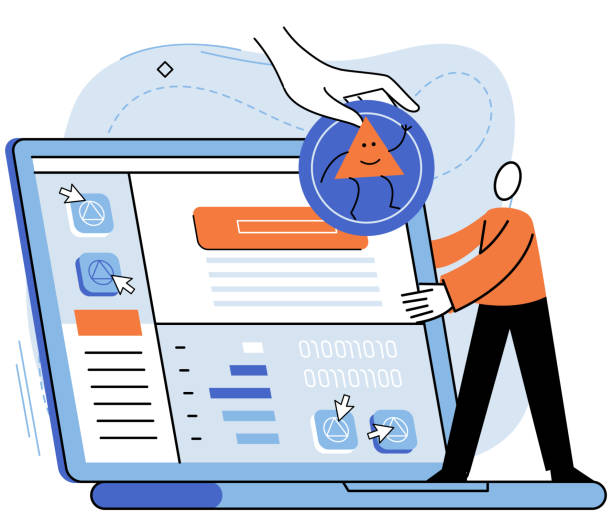Why is Fast Website Design Important?

Fast website design is no longer a competitive advantage, but an undeniable necessity in today’s digital world.
In an era where users expect instant page loading, even a few seconds of delay can mean losing customers and a significant drop in revenue.
Numerous studies show that more than half of website visitors leave a page if it takes longer than 3 seconds to load.
This alarming statistic highlights the critical importance of #website_speed and #performance_optimization for any business that aims to succeed online and maintain its organic traffic.
User experience (UX) is directly related to site speed; a fast-loading website keeps users satisfied, reduces the bounce rate, and significantly increases the conversion rate.
This is a key factor in customer satisfaction and retaining their loyalty.
In addition to user experience, site speed is a very important factor in SEO and ranking in search engines like Google.
Google has repeatedly stated that page loading speed is one of the ranking factors, especially after Core Web Vitals updates.
Therefore, a fast website not only respects your users but also sends positive signals to search engines and ultimately helps improve your position in search results.
This is even more critical for e-commerce businesses, as every millisecond of delay can mean millions of dollars in lost sales.
A fast website design allows users to easily navigate your site and access the products or services they are looking for.
In recent years, with the increased use of mobile devices for internet access, the importance of fast website design has doubled.
Mobile users often have limited internet connections and require websites with optimized loading.
If your site is slow on mobile, you will likely lose a large portion of your audience.
Also, the psychological impact of a fast site should not be overlooked; slow websites convey a sense of unprofessionalism and disregard for users, while fast sites bring a sense of efficiency and trust.
Therefore, investing in site speed optimization is not just an expense but a smart investment for the future of any online business.
Web development teams should focus from the outset on creating clean and optimized code to prevent future speed issues.
This is a proactive approach that can reduce additional costs for subsequent corrections.
Ultimately, the importance of fast website design lies in its ability to improve user experience, boost SEO, and support broader business goals.
This is not merely a technical issue, but a vital strategy for survival and growth in today’s competitive market.
Does your company’s website create a professional and lasting first impression on potential customers? Rasawb, with its professional corporate website design, not only represents your brand’s credibility but also opens a path for your business growth.
✅ Create a powerful and reliable brand image
✅ Attract target customers and increase sales
⚡ Get free consultation
Key Factors Affecting Website Speed
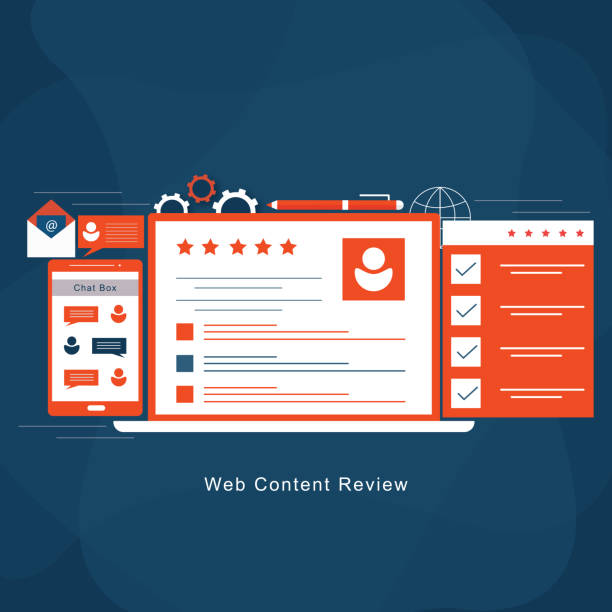
To achieve fast website design, it is essential to understand the key factors that affect website loading speed.
These factors can be divided into several main categories, each requiring precise optimization.
The first and perhaps most important factor is web hosting.
The type of hosting (shared, dedicated, VPS, or cloud), the geographical location of the server, and the quality of its hardware directly impact the site’s response speed.
A powerful and optimized host can significantly reduce TTFB (Time to First Byte).
Therefore, choosing a reputable hosting provider that matches your site’s traffic needs is the first step towards fast website design.
The second important factor is the size and optimization of files on the website.
Images, videos, CSS, and JavaScript files, if not optimized, can severely slow down site loading.
Image optimization using appropriate formats (like WebP) and compressing them without significant loss of quality, as well as lazy loading for images and videos outside the user’s viewport, are crucial techniques.
CSS and JavaScript files should also be minified and concatenated to reduce the number of HTTP requests to the server.
Using CDN (Content Delivery Network) services can also significantly improve loading speed by storing copies of static site files on servers closer to users.
The coding structure and website architecture also play a significant role in its speed.
Inefficient code, superfluous and unnecessary plugins, and unoptimized databases can create major bottlenecks in site performance.
Using lightweight frameworks, eliminating dead code, optimizing database queries, and employing proper caching on both server and client sides, all contribute to increasing speed.
Choosing a Content Management System (CMS) like WordPress also requires careful consideration; although WordPress is popular, excessive use of plugins and heavy themes can reduce page loading speed.
Therefore, in the process of fast website design, attention must be paid to all these technical details.
Regular performance evaluation and identifying weaknesses are also essential for maintaining site speed in the long term.
Advanced Tools and Techniques for Speed Optimization

To achieve fast and competitive website design, beyond choosing suitable hosting or initial image optimization, it is necessary to employ advanced tools and techniques that specifically impact every aspect of website performance.
One of the most effective techniques is the proper implementation of Caching.
Caching allows browsers and servers to store copies of your website content so that pages load faster on subsequent visits or by other users.
Types of caching include browser cache, page cache, object cache, and database cache, each requiring precise configuration.
Using caching plugins in CMSs (like WP Super Cache or W3 Total Cache for WordPress) or server-level caching configurations (like Redis or Memcached) can have a dramatic impact on website loading speed.
| Optimization Technique | Description | Impact on Speed |
|---|---|---|
| Minification and Compression | Removing extra characters (spaces, comments) from CSS, JS, and HTML files, and GZIP compression. | Reduces file size and transfer time |
| Using CDN | Distributing static site content on global servers close to users. | Reduces latency and main server load |
| Lazy Loading | Loading images and videos only when the user needs them. | Reduces initial page load and improves UX |
| Database Optimization | Cleaning, indexing, and optimizing SQL queries. | Increases data retrieval speed |
As seen in the table above, Minification and Compression of CSS, JavaScript, and HTML files are other very important techniques.
These processes respectively involve removing unnecessary characters (such as whitespace and comments) and compressing files (such as using GZIP) to reduce their size before sending them to the user’s browser.
This reduces data transfer time and consequently increases page loading speed.
Additionally, implementing Lazy Loading for images and videos, which only load when they are within the user’s viewport, reduces pressure on bandwidth and initial server resources.
Database optimization by removing redundant data, optimizing tables, and using appropriate indexes is also essential for maintaining high website speed in the long term.
This set of techniques forms the foundation of a fast and efficient website design.
Common Misconceptions about Fast Websites

On the path to achieving fast website design, many developers and business owners encounter common misconceptions that can lead to wasted time and money, or even have counterproductive results.
One of the most common misconceptions is that “all you need to do is buy a more powerful host.” While quality hosting is very important, an expensive host cannot compensate for poor design flaws, messy code, unoptimized images, or excessive plugins.
Site speed is a multifaceted puzzle that involves both server-side and client-side optimization.
Therefore, ideal loading speed cannot be achieved by merely upgrading the host.
Another common mistake is believing that “plugins and automated SEO tools solve all speed issues.” While many plugins can help improve speed, their excessive use, especially if they are not optimally coded, can become a factor in slowing down the site itself.
Every plugin adds extra code to your site that needs to be loaded.
Therefore, plugin selection should be smart and involve a careful review of their performance.
Some believe that “website beauty and abundant features are incompatible with speed.” This is a false belief.
With a fast website design approach and the use of modern techniques like Progressive Enhancement and CSS Grid, you can have both a beautiful, feature-rich site and maintain high speed.
The key lies in optimizing each component and using efficient coding.
The third misconception is that “speed optimization is a one-time task.” Speed optimization is an ongoing process.
With the addition of new content, CMS updates, new plugin installations, or changes in server infrastructure, site speed may be affected.
Therefore, regular monitoring and periodic speed tests are essential to maintain optimal website performance.
A fast website design requires continuous maintenance and updates to withstand technological changes and user expectations.
Finally, ignoring the importance of mobile optimization is also a gross error, as a large portion of today’s web traffic comes from mobile devices, and your site must provide a flawless user experience on these devices.
Are you frustrated with your online store’s low conversion rate?
Rasawb, with its professional e-commerce website design, is your definitive solution!
✅ Increase your sales and revenue
✅ Provide an unparalleled user experience for your customers
⚡ Get a free consultation now!
Best Practices for Web Designers and Developers

To achieve fast website design, web designers and developers must adhere to a set of best practices throughout all stages of the development cycle.
These practices range from technology selection to optimizing the final code.
The first step is minimalist and purposeful design.
Avoiding heavy visual elements and unnecessary code that have little impact on user experience can significantly improve initial page loading speed.
Using semantic HTML structure and organized CSS allows browsers to render content quickly.
In the realm of coding, focusing on JavaScript optimization is of particular importance.
JavaScript is often the main culprit for slow modern websites.
Using asynchronous (Async/Defer) JavaScript for script loading, dead code elimination, and code splitting to load modules only when needed, all contribute to performance improvement.
Image optimization should also be done systematically; using next-gen formats like WebP, automatic image compression upon upload, and providing responsive images with the `srcset` attribute for different devices are necessities for fast website design.
Proper font management is also an important consideration.
Loading too many fonts or heavy fonts can negatively impact speed.
Using compressed font formats (like WOFF2), limiting the number of fonts and their weights, and optimally loading fonts (Font Display Swap) can prevent Flash of Unstyled Text (FOUT) issues and increase text rendering speed.
Furthermore, using an optimized database and reducing unnecessary requests to it are also fundamental principles.
Designers should always be mindful that every element added to a page has a performance cost, and its value should be weighed against its impact on speed.
Implementing these practices not only helps build a fast website but also simplifies its maintenance and updates.
Impact of Mobile-First and Responsive Design on Speed
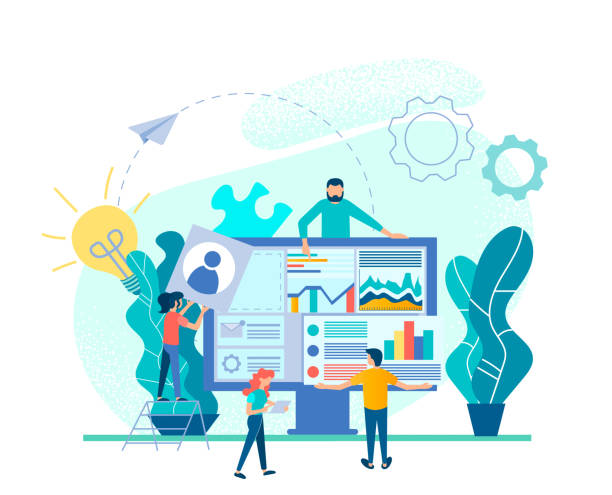
In the current era, where the majority of internet users access the web via mobile devices, the “Mobile-First” approach has gained critical importance in fast website design.
This approach means designing and developing websites first for smaller screens and then expanding them for larger screens.
This contrasts with the traditional “Desktop-First” approach, where sites were designed for desktops first and then adapted for mobile.
The reason for this shift is not only the massive volume of mobile traffic but also the fact that mobile users often use slower internet connections and more limited hardware.
When a website is designed based on mobile-first principles, it naturally focuses on lightweightness and high performance.
This means avoiding the loading of extra, heavy code that is only necessary for desktops.
As a result, a site initially optimized for mobile automatically performs faster on desktop as well.
Responsive Design complements this approach.
Responsive design allows the website to intelligently adapt to the user’s screen size, but without a mobile-first approach, it might still send heavy code to mobile devices that is not needed.
For example, large, high-resolution images suitable for 4K desktop displays should not be loaded for a mobile phone.
To achieve a fast website design in the context of mobile-first, special attention must be paid to details such as optimizing CSS and JS for conditional loading, using responsive images with `srcset` and `
Additionally, speed tests should be regularly performed using tools like Google PageSpeed Insights and Lighthouse, with a focus on mobile performance.
Ultimately, a website that loads quickly on mobile not only provides a better user experience and improves SEO ranking but also maximizes your business’s potential to access the larger mobile market and provides a significant competitive advantage in the field of fast website design.
Measuring and Monitoring Website Performance

After implementing the principles of fast website design, the next critical step is continuous measurement and monitoring of website performance.
Without accurate measurement, you cannot evaluate the impact of changes and identify hidden weaknesses.
Numerous tools are available for this purpose, each providing valuable information.
Google PageSpeed Insights is one of the most popular and accessible tools, providing performance scores for mobile and desktop versions and offering suggestions for speed improvement.
This tool uses Google’s Core Web Vitals data, which are crucial factors for SEO ranking.
| Speed Metric | Description | Target (Optimal) |
|---|---|---|
| First Contentful Paint (FCP) | The time when the first content (text, image) is displayed on the screen. | Below 1.8 seconds |
| Largest Contentful Paint (LCP) | The time when the largest visible content element on the screen loads. | Below 2.5 seconds |
| Cumulative Layout Shift (CLS) | The extent of visual instability of the page during loading (element shifts). | Below 0.1 |
| Time to Interactive (TTI) | The time when the page becomes fully interactive and responsive to user input. | Below 5 seconds |
As shown in the table above, in addition to PageSpeed Insights, the Google Lighthouse tool, built into Chrome DevTools, provides a deeper analysis of performance, accessibility, SEO, and web best practices.
Regular use of this tool is very useful for identifying performance bottlenecks and providing practical solutions.
Other tools like GTmetrix and Pingdom also provide comprehensive information on loading times, number of requests, and file sizes, which are essential for more precise analysis.
Continuous monitoring with Real User Monitoring (RUM) or Synthetic Monitoring tools also helps you understand real user experiences and react quickly if any speed drop occurs.
This proactive approach to website performance monitoring ensures that your fast website design is maintained over time and always operates at the highest level of efficiency.
Without monitoring, efforts to optimize speed may become ineffective.
Successful Examples of Fast Website Design and its Benefits
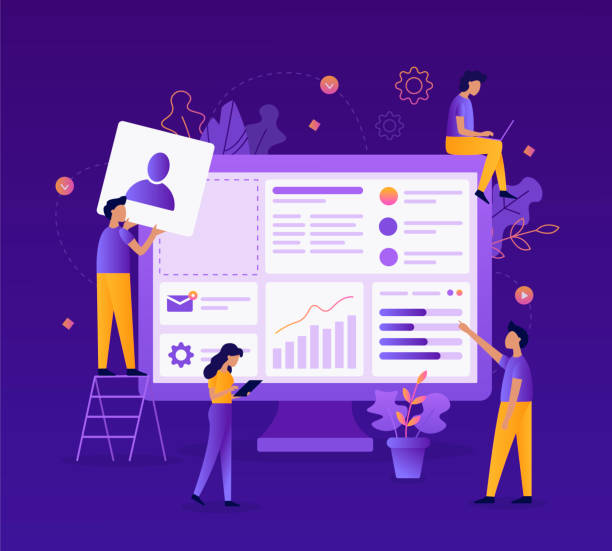
Studying successful examples in the field of fast website design can be inspiring and a good guide for other businesses.
Leading companies worldwide and even smaller businesses have achieved significant benefits by investing in their website speed.
For example, Amazon, one of the world’s largest e-commerce platforms, has reported a 1% increase in sales with every 100 milliseconds improvement in its page load speed.
This shows that even the smallest improvements in site speed can have significant financial impacts.
Another case is Pinterest, which, after reducing the waiting time for mobile page loads by 40%, saw a 15% increase in sign-ups and a 40% increase in organic SEO.
These statistics demonstrate the direct correlation between website speed and conversion rates and visibility in search engines.
The benefits of a fast website are not limited to increased sales and improved SEO.
Improved user experience directly leads to increased customer satisfaction.
Users feel better about sites that respond quickly and are more likely to return and become loyal customers.
Furthermore, a fast site can reduce operational costs.
By optimizing resources and code, you will need less server hardware, and bandwidth consumption will decrease.
This is particularly important for high-traffic sites.
Also, a fast website adds to your brand’s credibility.
In users’ minds, a fast site is synonymous with professionalism and high quality.
This is crucial, especially for startups and new businesses looking to establish a strong image in the market.
Ultimately, fast website design is not just a technical investment but a comprehensive strategy for business growth and creating a sustainable competitive advantage in the online market.
These examples clearly show why no business should underestimate the importance of its website’s speed.
Are you falling behind in the competition with large online stores?
Rasawb, with its professional e-commerce website design, brings your business online and increases your market share!
✅ Boost brand credibility and customer trust
✅ Easy shopping experience leads to more sales
⚡ Act now for a free website design consultation!
The Future of Web Speed Optimization and the Role of AI
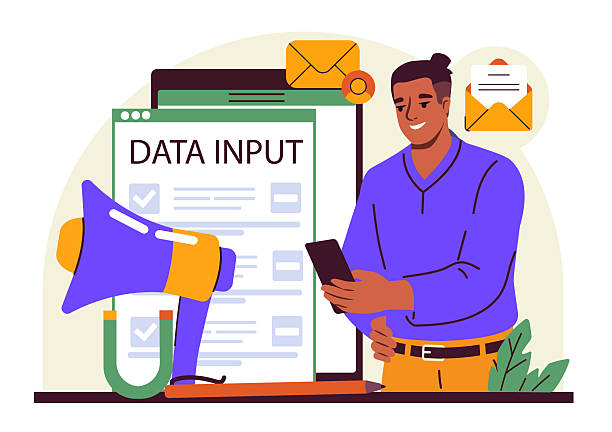
The future of web speed optimization is intertwined with rapid advancements in Artificial Intelligence and Machine Learning.
As websites become more complex and data volumes increase, manual optimization methods may no longer suffice.
Artificial Intelligence (AI) holds significant potential to revolutionize the process of fast website design and its maintenance.
One of the most important applications of AI in this field is automatic image and video optimization.
Deep learning algorithms can determine the best format, compression, and size for each image based on the user’s device type and connection speed, without compromising visual quality.
This real-time optimization can significantly reduce loading times.
Furthermore, AI can play a role in code optimization.
AI-powered tools can analyze CSS and JavaScript code, identify inefficient patterns, and automatically improve them.
This includes intelligent minification, identifying and removing dead code, and even rearranging code for more optimal loading.
Beyond this, AI can predict user behavior.
By analyzing traffic patterns and user interactions, an AI system can anticipate which section of the site the next user will visit and pre-fetch its content, leading to a much faster user experience.
The role of AI in CDNs is also expanding.
Intelligent CDNs can make better decisions regarding content storage and delivery locations based on real-time traffic and user geographical location.
This means delivering content from the closest and fastest server at any given moment.
Performance monitoring also reaches a new level with AI.
AI systems can continuously monitor site performance, quickly identify anomalies and speed drops, and even provide automated solutions to problems.
This makes maintaining a fast website much more efficient.
In summary, the future of fast website design lies in deeper integration with Artificial Intelligence, which provides unprecedented possibilities for optimization, prediction, and automation of processes, transforming the web experience for everyone.
Practical Steps to Achieve Fast Website Design

Achieving a fast website design is not a complex process, but rather a set of practical and continuous steps that must be carefully followed.
For business owners and developers, understanding and implementing these steps can make a big difference in online success.
The first practical step is initial status assessment.
Analyze your site using tools like Google PageSpeed Insights, Lighthouse, GTmetrix, or Pingdom Tools to identify its current strengths and weaknesses.
This assessment should be done regularly, not just once.
The second step is content optimization.
Images and videos are often the biggest cause of slow performance.
Ensure that images are compressed in modern formats (like WebP) with the smallest possible size.
Use Lazy Loading for images and videos outside the viewport.
For videos, instead of direct loading, use external services like YouTube or Vimeo and only display their thumbnails.
Also, enable GZIP compression for all text files (CSS, JS, HTML) on the server.
The third step is code and server resource optimization.
Minify and concatenate your CSS and JavaScript files to reduce the number of HTTP requests.
Load JavaScript asynchronously (Async/Defer) to prevent it from blocking page rendering.
Utilize caching at all levels (browser, server, CDN).
A powerful CDN can significantly reduce loading times for users in different geographical locations.
Ensure that your hosting is powerful and suited to your site’s traffic needs and uses the latest versions of PHP and databases.
The fourth step is design review and optimization.
Consider a mobile-first approach and ensure your site is fast and responsive on mobile devices.
Use web fonts optimally and avoid loading unnecessary fonts.
Removing plugins and extra tools that negatively impact speed is also a priority.
Finally, don’t forget continuous monitoring and regular updates.
Fast website design is not a one-time project, but a continuous commitment to providing the best possible user experience.
By implementing these practical steps, you can have a high-performing website that greatly assists your business growth.
Frequently Asked Questions
| No. | Question | Answer |
|---|---|---|
| 1 | What does fast website design mean? | Optimizing a website for quick page loading, improving user experience, and SEO ranking. |
| 2 | Why is website loading speed important? | Increases user satisfaction, reduces bounce rate, improves SEO, and increases conversion rate (sales/actions). |
| 3 | What tools are available to test website speed? | Google PageSpeed Insights, GTmetrix, Pingdom Tools are common tools. |
| 4 | What are the main causes of a slow website? | Unoptimized images, heavy JavaScript and CSS codes, poor hosting, and lack of caching. |
| 5 | What is “Caching” and how does it help site speed? | Temporarily storing site data in the user’s browser or server for faster loading on subsequent visits. |
| 6 | How to optimize images to increase website speed? | Reducing image size (compression) without significant quality loss, using modern formats (WebP), and adjusting appropriate dimensions. |
| 7 | What role does CDN (Content Delivery Network) play in fast website design? | Distributing website content across various servers worldwide to deliver content from the closest server to the user. |
| 8 | Does choosing suitable hosting (web hosting) affect site speed? | Yes, quality hosting and powerful servers are essential for fast site loading. |
| 9 | What is Minification technique and why is it used? | Removing extra characters (whitespaces, comments) from HTML, CSS, JavaScript codes to reduce file size. |
| 10 | What is the relationship between responsive design and site speed? | Responsive design means correct display on different devices; if not implemented correctly, it can create extra load and reduce speed. Responsive optimization is crucial for speed. |
And other services of Rasawb Advertising Agency in the field of advertising
How advertorials help increase website traffic
Differences between advertorials on classifieds sites and other platforms
How to better understand your target market with advertorials
Pricing strategies in advertorials for office machines
The role of advertorials in introducing new office equipment technologies
And over hundreds of other services in internet advertising, advertising consultation, and organizational solutions
Internet Advertising | Advertising Strategy | Advertorial
🚀 To get your business seen and thrive in the digital world, Rasawb Afarin Digital Marketing Agency, specializing in areas such as personal website design, SEO, and online advertising campaign management, is your partner to make your brand shine.
📍 Tehran, Mirdamad Street, next to Bank Markazi, Southern Kazeroon Alley, Ramin Alley, No. 6

